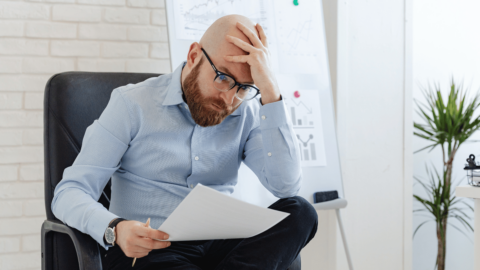You’ve worked hard to get clean. You’ve fought through withdrawal, started rebuilding your life, and maybe even found hope in recovery. But then, out of nowhere, a craving hits. A bad day, a painful memory, or even just passing an old familiar place—and suddenly, the urge to use feels overwhelming.
Relapse isn’t a sign of failure. It’s a normal, but preventable, part of recovery. In fact, research shows that 40–60% of people recovering from opioid addiction experience relapse at some point—not because they lack willpower, but because addiction rewires the brain.
Understanding why relapse happens and how to prevent it can make all the difference. Let’s break it down.
Why Does Opioid Relapse Happen? The Science Behind It
Opioids rewire the brain’s reward system, making it extremely difficult to stop using them once dependence has developed. Even after detox and months of sobriety, the brain remembers the drug’s effects, and cravings can return unexpectedly.
3 Key Reasons People Relapse After Opioid Addiction
1. Physical Cravings and Post-Acute Withdrawal Syndrome (PAWS)
- Even after the worst withdrawal symptoms are over, some people experience lingering withdrawal effects for weeks or months. This is called Post-Acute Withdrawal Syndrome (PAWS).
- Symptoms include fatigue, depression, anxiety, sleep problems, and mood swings, making it tempting to use opioids again for relief.
Example: A person in early recovery feels exhausted and unable to focus at work. They think, “Just one pill will help me get through the day.” That thought can lead to relapse if they don’t have a plan to cope.
2. Emotional Triggers: Stress, Trauma, and Anxiety
- Many people with opioid addiction use drugs as a way to self-medicate for past trauma, anxiety, or depression.
- When those emotions resurface in recovery, without opioids to numb them, the cravings can be overwhelming.
Example: Someone loses their job and feels hopeless. They think, “I just need to escape for a little while.” That’s a dangerous moment if they don’t have healthy coping mechanisms in place.
3. Overconfidence in Recovery
- Some people feel so good in recovery that they start to believe they no longer need support.
- They may skip therapy, stop medication, or distance themselves from their recovery community, thinking they have it under control.
- Then, when a stressful moment hits, they don’t have the safety net they need to stay sober.
Example: A person who’s been sober for a year stops going to meetings because they “feel fine.” Months later, they run into an old friend who offers them opioids. With no immediate support system, they relapse.
What Are the Most Common Relapse Triggers?
Recognizing your personal triggers can help you avoid relapse before it happens.
Top 5 Opioid Relapse Triggers:
- Stress – Work, relationships, financial struggles, and daily life pressures.
- Pain – Old injuries, chronic pain, or post-surgery recovery can make opioids tempting again.
- People & Places – Being around old friends who use or visiting places associated with drug use.
- Boredom & Isolation – Feeling alone or without purpose can lead to “just one time” thinking.
- Overconfidence – Believing you’re “cured” and no longer need medication or support.
Tip: Keeping a relapse prevention plan in place is crucial, even if you’ve been sober for a long time.
Practical Relapse Prevention Strategies: How to Prevent Opioid Relapse
Relapse prevention isn’t just about willpower—it’s about having the right tools in place.
1. Stay Connected to Support
- Regular therapy, 12-step programs (like NA), online recovery groups, or counseling can keep you accountable.
- Don’t isolate yourself. Having people to check in with can stop a relapse before it starts.
Example: A person struggling with cravings calls their sponsor instead of reaching out to an old dealer. That one conversation keeps them on track.
Do you need help right now? For free and confidential support, call the Substance Abuse and Mental Health Services Administration (SAMHSA) National Helpline at 1-800-662-HELP (4357) or visit www.samhsa.gov for resources and treatment options.
2. Manage Pain Without Opioids
- If you have chronic pain, work with a doctor to find non-opioid pain relief options like NSAIDs, acupuncture, physical therapy, or lifestyle changes.
- If you need surgery or dental work, talk to your doctor about opioid alternatives.
Example: Instead of taking opioids after a wisdom tooth extraction, a recovering addict uses ibuprofen, ice packs, and distraction techniques.
3. Consider Medication-Assisted Treatment (MAT)
- Suboxone (buprenorphine-naloxone) is a proven treatment that reduces cravings and prevents relapse.
- Many people stay on Suboxone for months or years to keep their recovery stable.
Example: A person who struggled with opioid relapse in the past stays on Suboxone and remains sober, even after facing job loss and financial stress.
How QuickMD Can Help Prevent Opioid Relapse
If you’re struggling with cravings, withdrawal symptoms, or fear of relapse, QuickMD can help.
QuickMD Offers:
- Online Suboxone treatment – Get a prescription from home, with no long wait times.
- Same-day and weekend appointments – Because addiction doesn’t follow a schedule.
- Confidential and affordable care – No insurance? No problem. QuickMD offers low-cost treatment options.
- Counseling and mental health support – Talk to a professional about stress, cravings, and relapse prevention.
Final Thoughts
Opioid relapse can happen to anyone—but it doesn’t have to happen to you. Understanding triggers, staying connected to support, and using medication-assisted treatment can help you stay on the path to recovery.
If you’re struggling, reach out for help. Whether it’s a therapist, a sponsor, or a doctor, the right support can make all the difference.
Need professional support? Get help now with QuickMD.




